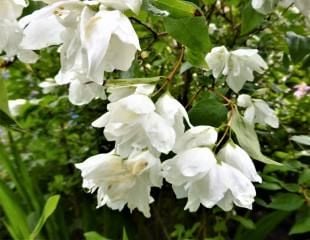
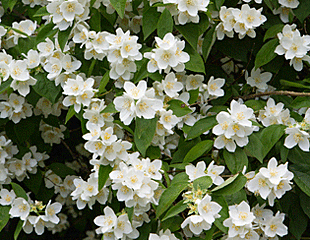
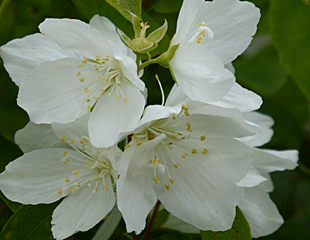
How to Plant and Grow Philadelphus the Mock Orange shrub
Philadelphus is an easy to grow deciduous shrub, which flowers in early summer. Philadelphus earns the name "The Mock Orange Shrub" because of its scented flowers.
Philadelphus is a medium to large garden shrub. To flower at its best, Philadelphus needs to be planted in a sunny spot or light shade, with well drained soil which is not prone to water logging.
Plant the shrub at the same level as it is in the container and take into account its eventual large size. Many gardeners plant Philadelphus towards the back of the border to allow it to spread. As with all newly planted shrubs, water it very regularly until established.
In terms of growth, different varieties grow between 1.2m and 3m. There are several popular garden varieties which are fully hardy to H6, which is -15, ideal for UK winters.

Philadelphus requires little attention, which makes it a green wheelbarrow shrub.
How to prune Philadelphus the Mock Orange Shrub
Philadelphus will benefit from pruning, although it is not essential every year.
Philadelphus will need a prune in three circumstances:
- The shrub is getting too large for its allotted space
- It has developed some spindly branches
- Or you have noticed it is flowering less.

The Philadelphus in the image on the left looks neatly pruned, indicating that someone has taken care to keep it in its allotted space.
The time to prune Philadelphus is after flowering in late July. Cut back to good bud and /or remove about a quarter of the old growth. In common with many shrubs, regular pruning removing some of the older growth will promote new growth, and better flowering.
Over time, Philadelphus can become woody with all the flowers at the top, and long wood/cane like stems which look unattractive. Philadelphus belongs to that group of shrubs which will tolerate hard pruning and come back although it may take more than one season. If your Philadelphus shrub has become overgrown and unsightly, prune it hard, around July, after flowering down to 1ft/ 30 cms. Philadelphus flowers on the previous year's growth, known as “flowering on old wood”. If you prune hard to renovate, it may not flower the following year but should put on a good deal of growth and by year 2 will look a great deal better and blooming.
Looking for a similar shrub to Philadelphus, but evergreen. Check out Choisya, which also has white scented flowers in the summer, and is evergreen.
Good varieties of Philadelphus for the garden.

Popular, easy to grow varieties, include:
P.'Belle Etoile' illustrated above right, a more compact variety up to 2m, fully hardy arching branches with many very fragrant flowers. A single flowering variety which is attractive to bees. Available from Crocus
P cornonarius is the variety most commonly known as the mock orange shrub, as it possibly has the most strongly scented flowers. White blooms with yellow centres (illustrated above centre) the flowers are around 2.5cms wide. Once established, the shrub is drought resistant and it will tolerate all soil types and partial shade. Height around 1.25m.
P. coronarius
Aureus
starts with bright yellow foliage in the spring which fades to a chatrese green later in the year. The flowers are scented with a touch of lemon. It is will reach around 1.5 m.
P. 'Boule d'Argent' is less fragrant, but has the advantage of semi-double to double white flowers.
There is a golden yellow leaved variety P.'Aureus' which grows up to 2.5m.
P. Mexican Jewel' has white flowers with purple centres.
Suttons have 17 varieties of Philadelphus, including several mentioned above. A great range of beautifully scented Philadelphus, a reliable garden shrub.
The scent is to smell of bubblegum.
If you would like to see a collection of Philadelphus in a garden setting, Kelmarsh Gardens has a Philadelphus garden which shows them at their very best. View in mid June onwards when Philadelphus come into flower, the images were taken at Kelmarsh.
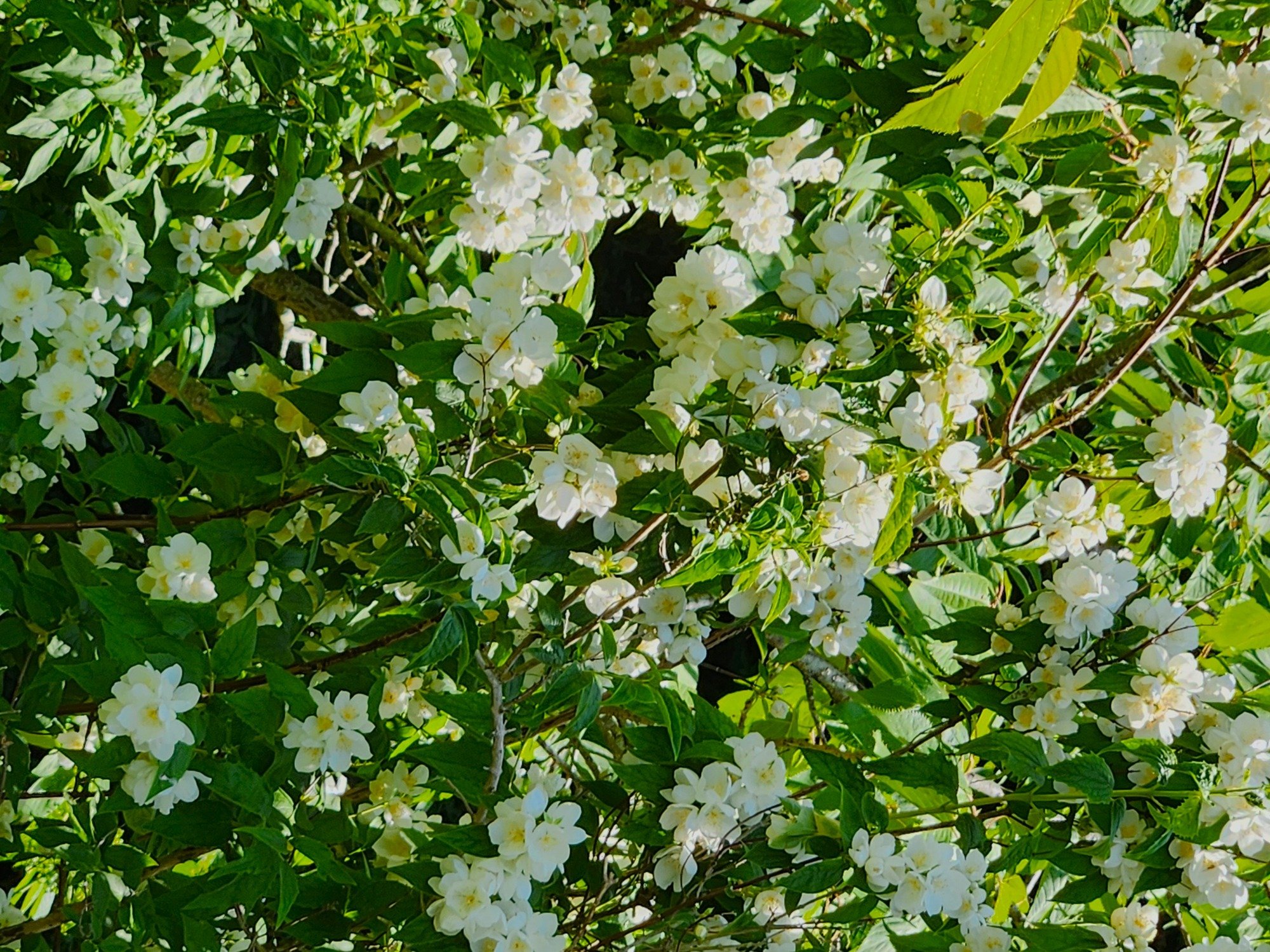
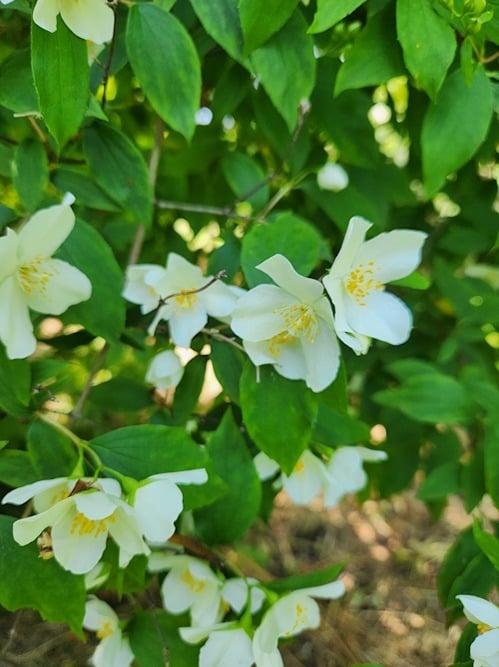
Best Philadelphus for growing in containers
You can grow Philadelphus in a container. As a shrub, the highlight is its scented flowers over a long flowering season.
Like all container-grown plants, it needs to be well watered, especially when first planted to get established. To grow in a container, pick a compact variety such the lovely delicate pink Philadelphus 'Petite Perfume Pink' which grows to around 1.2m ( 4ft) and is available from Suttons (affiliate link)
